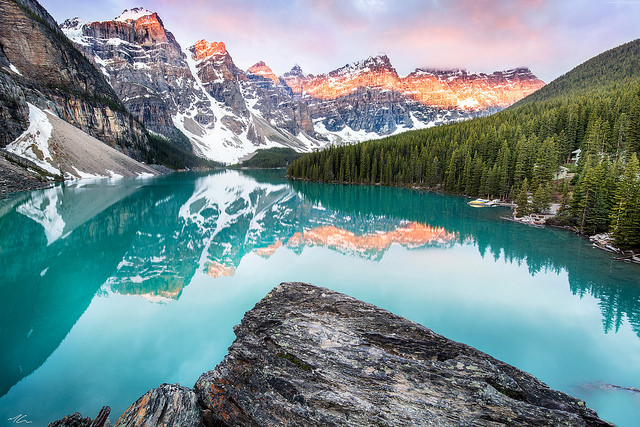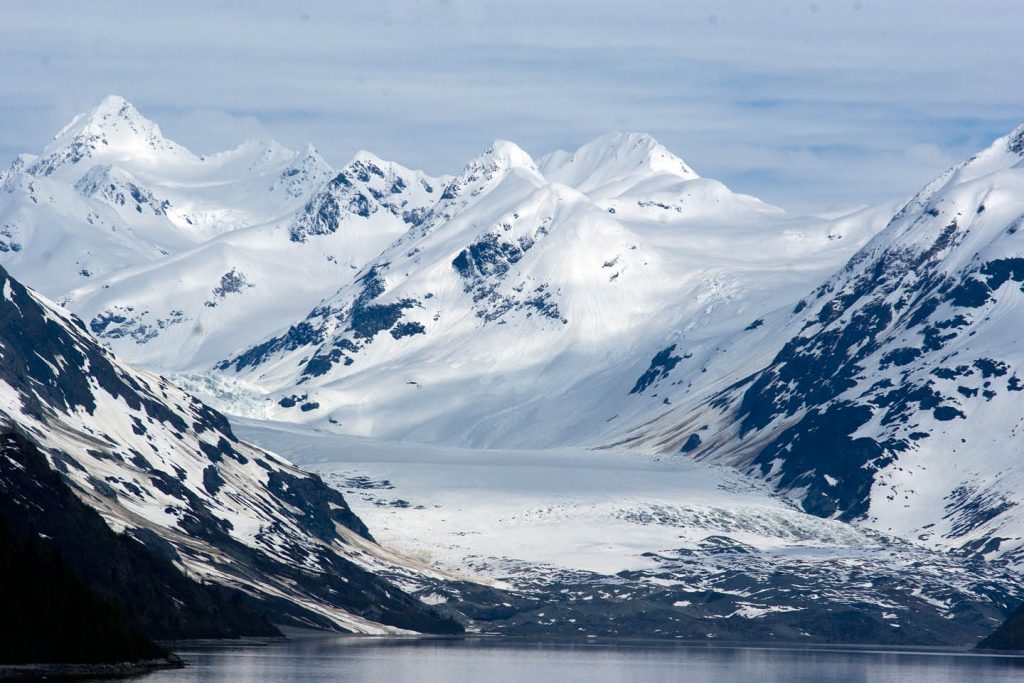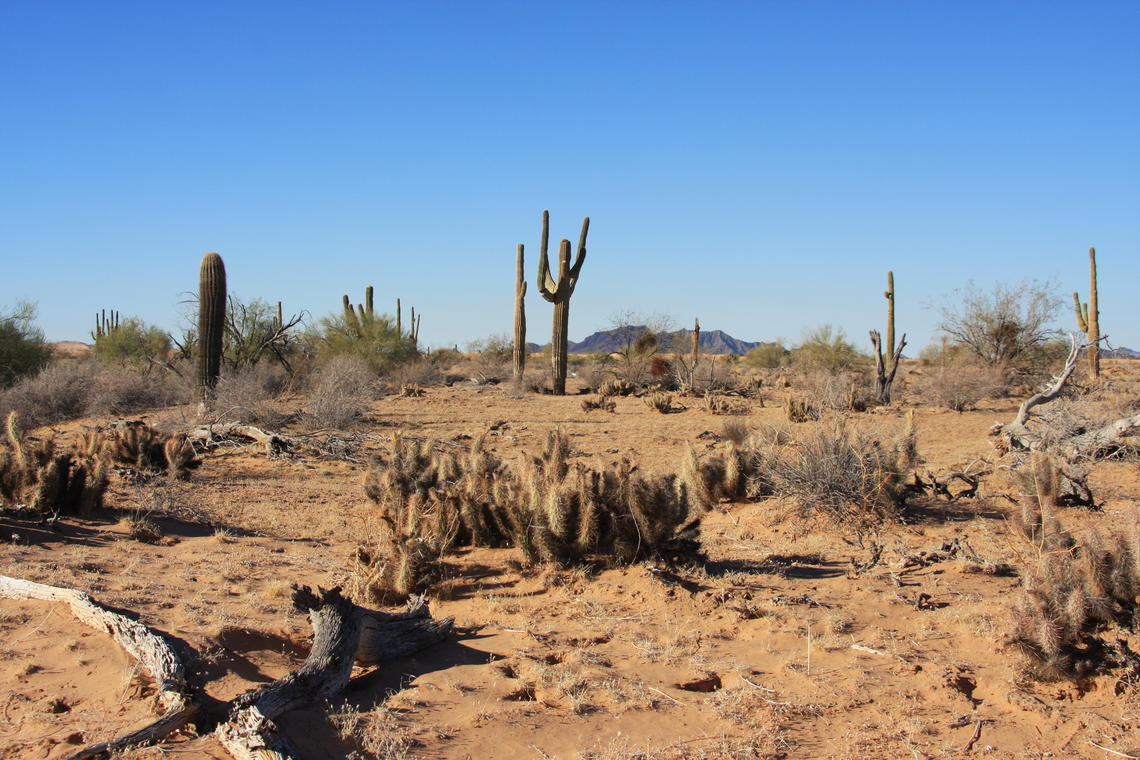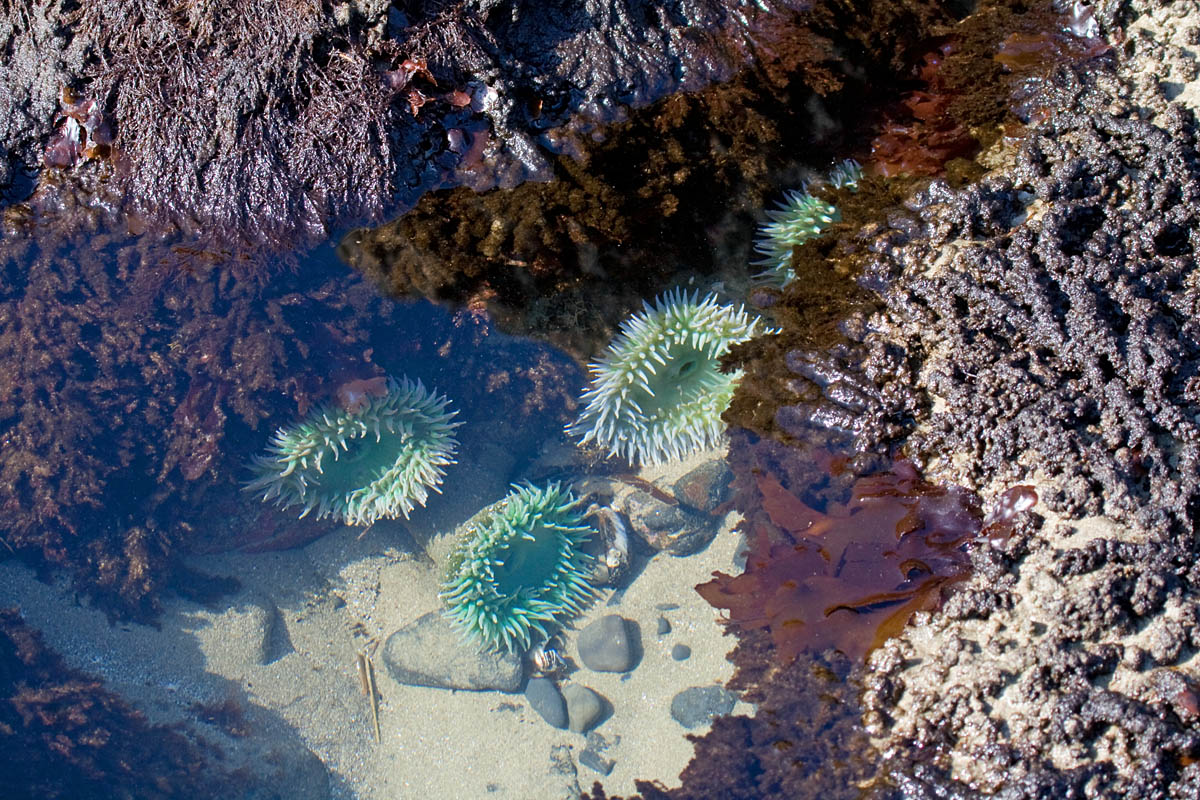4.1 Read: About Sense of Place Through Description
| Site: | Cowichan Valley School District - Moodle |
| Course: | ELA8, CSS, Sferrazza |
| Book: | 4.1 Read: About Sense of Place Through Description |
| Printed by: | Guest user |
| Date: | Monday, 5 January 2026, 2:08 AM |
Introduction
Consider this: What value is there in connecting to our natural world and how is that most effectively done through description?
In this unit you will deepen your understanding of sense of place through description. You will look closely at the natural world around you, and use all of your senses to enrich your experience. You will practice noticing specific details that capture a place’s essence, and recognize the feeling or mood a place evokes.
You will practice creating your own description of your favourite places in different forms and by using descriptive techniques (i.e., imagery, sensory language, specific detail, and mood). Moreover, by examining samples of professional writing throughout the unit, you will see exemplary description in action and be able to emulate these models in your own work.
In the writer's workshop and in a project of your choice you will use descriptive techniques to communicate your connection to a place or series of places.
4.1 Self Portrait
Let's start with something we know about! How we describe ourselves is a reflection of our personal identity. It is our experiences - with our family, friends, society - that shape our individuality. The connections we make with others, with nature, and with ourselves also shape our individuality. Consider how you would describe yourself? What are your significant connections to others, to the world around you? What has had an impact on your personal identity?
Buffy Sainte-Marie, is a Canadian singer-songwriter, musician, composer, visual artist, educator, pacifist, and social activist. Throughout her career in all of these areas, her work has focused on issues of indigenous peoples of the Americas. Her singing and writing repertoire also includes subjects of love, war, religion, and mysticism. She describes herself in this computer image she calls "Self-Portrait".
From: https://en.wikipedia.org/wiki/Buffy_Sainte-Marie
Self-Portrait - a computer image by Buffy Sainte-Marie
From: http://buffysainte-marie.com/?page_id=15
To get started open your Unit 4 Learning Guide 4.1 Self Portrait and in point form, describe how you identify yourself. Give at least 4 adjectives. Then after researching Buffy Sainte-Marie, write a brief paragraph to describe how Buffy Sainte-Marie portrays herself in this portrait. Use at least 4 descriptive adjectives in your response. What information about Buffy Sainte-Marie can you learn from other sources to better understand this visual portrayal?
4.2 The Value of Nature Observation Exercise
In your learning guide complete your second entry (4.2 The Value of Nature Observation Exercise) by writing down some of your observations and connections to nature in Part A (point form, rough paragraphs, or even sketches). How do you connect to nature? In Part B, write down any ideas or questions that came to you while observing. Close observation is a skill crucial to many disciplines, that helps lead to deep understanding and creation. To truly gain a sense of place it is helpful to practice your observation skills.
Whether it is a park, your backyard, a favourite hike or any natural environment go there and do the following.
1. Take a few minutes to close your eyes and just listen to any sounds that you hear.
2. Slow down and take time to feel and smell objects in nature.
3. Observe even the simplest of actions that you notice happening: how the breeze moves the grass, an insect travelling over the ground, shifting clouds etc.
4. Take a string, a metre long or a hula hoop, and make a circle on the ground. Focus very closely on what is in there.
4.3 Ecosystems A Picture is Worth 1000 Words
Ecosystems
An ecosystem is a community made up of living organisms (biotic components) and nonliving components such as air, water, and soil (abiotic components). Ecosystems include interactions among organisms, and between organisms and their environment. Ecosystems can be of any size but each ecosystem has a specific, limited space. Some scientists view the entire planet as one ecosystem.
Ecosystems are controlled by both external and internal factors. External factors such as climate, the parent material that forms the soil, topography and time each affect ecosystems. However, these external factors are not themselves influenced by the ecosystem. Ecosystems are dynamic: they are subject to periodic disturbances and are often in the process of recovering from past disturbances and seeking balance. Internal factors are different: They not only control ecosystem processes but are also controlled by them. Humans operate within ecosystems and can influence both internal and external factors. Global warming is an "alleged" example of a cumulative effect of human activities. Ecosystems provide benefits, called ecosystem services, which people depend on for their livelihood.
Here are 4 different ecosystems: Forest, tundra, desert, and marine. These are links to the images so you can see a bigger picture and the source.
 |
 |
 |
 |
To learn about ecosystems and their interactions.
Assignment: For the first part, select one of the ecosystems and brainstorm all the different ways that your senses are awakened. Describe the place by appealing to all 5 senses. Think about how all the different parts in your ecosystem are working together. How do all the different parts interact? What is their connection to each other? Please fill in the chart.
Then in the second part, write a descriptive paragraph that clearly creates a vivid picture of the place you selected. Be sure to use lots of imagery and figurative language. Remember imagery is description using the 5 senses. What sights do you see? Any smells? Sounds? Obviously, you will have to use your imagination. Then you'll need to include some figurative language. Why not try a simile - a comparison using like or as? HOW cold is it? What about a metaphor? Or even try hyperbole. .
|
Open your learning guide and complete the assignment Ecosystems 4.3. |
4.4 Poem - Walking Through Words
Many artists communicate their personal connection to nature in their writing, art, and creative expression. The following artists use imagery and literary devices to create distinct, memorable descriptions to connect to their place.
First, listen to and observe the poet, Shane Koyczan, describing the wilds of British Columbia through metaphors. Remember a metaphor is two different objects or symbols being compared that are not literally the same. Notice how the tone of his voice, his pacing, and the accompanying music helps create emotion.
Next, listen to the clip again, this time completing the activities in your learning guide for Assignment 4.4 Poem - Walking Through Words.
4.5 Henry David Thoreau
Another example of a writer who uses descriptive language to connect to a personal place is Henry David Thoreau.
Henry David Thoreau (July 12, 1817 – May 6, 1862) was an American writer. His ideas have endured for so long, some believe, because they were connected to place. This author is best known for his collection of essays he wrote while living near Walden Pond, Massachusetts titled "Walden". He wrote about his personal observations of nature and humanity's connections to nature. Thoreau was one of the first environmentalists. He believed in conserving our natural resources on private land and preserving wilderness as public land. He sought to integrate nature and culture and believed in a balance between civilization and nature. "He was also deeply interested in the idea of survival in the face of hostile elements, historical change, and natural decay". Source
He said, "I have traveled a good deal in Concord [Massachusetts]." Thoreau wrote about his home community, and, indeed, both his naturalism and his humanity derived from the specific place and time he lived in. Thoreau teaches us that one does not have to travel far to find curious, fascinating, and inspiring things. As a matter of fact, except for only a handful trips that Thoreau made outside Concord, he spent most of his life in one area. And he knew that area better than anyone else - he took almost daily walks, in any kind of weather, up to four hours a day. Thoreau says about Walden, "The scenery of Walden is on a humble scale, and, though very beautiful, does not approach to grandeur, nor can it much concern one who has not long frequented it or lived by its shore."
The ultimate lesson of Thoreau, thus, is that special places are the ones we know well, the ones we "frequent" and grow to love. And thus, the ethic of stewardship should begin with treasuring and preserving one's home-place.
Thoreau's process of finding his 'Walden' teaches us that anyone can do the same. But what does it really mean to have a 'Walden'? A 'Walden' is a place that has special meaning to a community. It doesn't have to be pristine, nor does it necessarily have to be a fully natural area. A 'Walden' can be an empty lot, a schoolyard, a building, a park, conservation lands, farmlands, etc. A 'Walden' is a place of significance to the community, and thus it is up to each person or community to identify what is their 'Walden'. (from https://www.cincymuseum.org/sites/default/files/walden_edu_guide.pdf)
Part A: Read Thoreau: I Went to the Woods from "Walden" Chapter 2 "Where I Lived and What I Lived For"
I went to the woods because I wished to live deliberately, to front only the essential facts of life, and see if I could not learn what it had to teach, and not, when I came to die, discover that I had not lived. I did not wish to live what was not life, living is so dear; nor did I wish to practise resignation, unless it was quite necessary. I wanted to live deep and suck out all the marrow of life, to live so sturdily and Spartan-like as to put to rout all that was not life, to cut a broad swath and shave close, to drive life into a corner, and reduce it to its lowest terms, and, if it proved to be mean, why then to get the whole and genuine meanness of it, and publish its meanness to the world; or if it were sublime, to know it by experience, and be able to give a true account of it in my next excursion.
Part B: Read Thoreau: Walden is a Perfect Forest Mirror from Chapter 9 "The Ponds"
In such a day, in September or October, Walden is a perfect forest mirror, set round with stones as precious to my eye as if fewer or rarer. Nothing so fair, so pure, and at the same time so large, as a lake, perchance, lies on the surface of the earth. Sky water. It needs no fence. Nations come and go without defiling it. It is a mirror which no stone can crack, whose quicksilver will never wear off, whose gilding Nature continually repairs; no storms, no dust, can dim its surface ever fresh; —a mirror in which all impurity presented to it sinks, swept and dusted by the sun’s hazy brush,—this the light-dust cloth,—which retains no breath that is breathed on it, but sends its own to float as clouds high above its surface, and be reflected in its bosom still.
A field of water betrays the spirit that is in the air. It is continually receiving new life and motion from above. It is intermediate in its nature between land and sky. On land only the grass and trees wave, but the water itself is rippled by the wind. I see where the breeze dashes across it by the streaks or flakes of light. It is remarkable that we can look down on its surface. We shall, perhaps,look down thus on the surface of air at length, and mark where a still subtler spirit sweeps over it….
….It struck me again tonight, as if I had not seen it almost daily for more than twenty years — Why, here is Walden, the same woodland lake that I discovered so many years ago; where a forest was cut down last winter another is springing up by its shore as lustily as ever; the same thought is welling up to its surface that was then; it is the same liquid joy and happiness to itself and its Maker, ay, and it may be to me.
|
Answer the questions on Henry David Thoreau's essays in your Learning Guide 4.5. |
4.6 Razzleberries
Lee Maracle (b. 1950) is one of the most prolific aboriginal authors in Canada and a recognized authority on issues pertaining to aboriginal people and aboriginal literature. She is an award-winning poet, novelist, performance storyteller, scriptwriter, actor and keeper/mythmaker among the Stó:lō people. Source: https://en.wikipedia.org/wiki/Lee_Maracle
She wrote this poem while she and her children were picking berries to get the money for their first holiday together. Her language is intended to bring two kinds of creative "vegetation" together: the written word and the oral word.
Razzleberries (1992, 2000)
A thousand tiny thorns
tear at my flesh
intense sun-heat blisters
my black back.
Countless red berries
bob and weave
before me.
Stinging nettles
morning mud, mosquitos
cow flies...
A heavy bucket pulls at my neck
arms upstretched, eyes squinting.
Still, I'd rather pick razzleberries
than vegetate before a typewriter.
|
Answer the questions on the poem in your Learning Guide 4.6 Razzleberries. |
4.7 Haiku
Another example of literature that connects to nature is a traditional Japanese haiku. It is a three-line poem with seventeen syllables, written in a 5/7/5 syllable count. Often focusing on images from nature, haiku emphasize simplicity, intensity, and directness of expression.
A haiku was traditionally written in the present tense and focused on associations between images. There was a pause at the end of the first or second line, and a “season word," or kigo, specified the time of year.
As the form has evolved, many of these rules—including the 5/7/5 practice—have been routinely broken. However, the philosophy of haiku has been preserved: the focus on a brief moment in time; a use of colorful descriptive language to create images; an ability to be read in one breath; and a sense of sudden enlightenment and illumination.
https://www.poets.org/poetsorg/text/haiku-poetic-form
Look at the following haiku and see if you can note what they all have in common. Consider both the content and the structure.
|
Answer the questions on haikus in your Learning Guide Part A: 4.7 Haiku. Then, again go outside and observe what you see in nature. Whether it is seeing a spectacular sunset, witnessing a severe weather change, or noticing a beautiful pattern or colour in nature, sometimes a photograph can't catch your reaction to the moment, or a smell or feeling. In your learning guide Part B, write two different haikus about a moment in nature you experience. |
4.8 Cree Story: Wesakechahk : Why Muskwa, Bear, Has a Short Tail
Cree stories are told in the storytelling oral format. They use many descriptive and performance techniques to communicate Cree culture's connection to nature. The following story explains Why Muskwa, Bear, Has a Short Tail. This is a Thick Woods Cree teaching on being naïve as it follows Wesakeshahk on his travels.
Wesakechahk is the benevolent culture hero of the Cree tribe (sometimes referred to as a "transformer" by folklorists). Wesakechahk is a trickster character whose adventures are often humorous. His name is spelled many different ways partially because Cree was originally an unwritten language (so English speakers just spelled it however it sounded to them at the time) and partially because the Cree language is spoken across a huge geographical range in both Canada and the US. The correct pronunciation in Plains Cree is similar to wee-sah-keh-chahk. Wesakeshahk shares many similarities with other Algonquian heroes such as the Blackfoot Napi.
Why Muskwa, Bear, Has a Short Tail
And it is told among the Cree that in the long moon when-ravens-freeze-in-trees, Wesakechahk was walking through the Birch Mountains. [northeastern Alberta]
Wesakechahk, wolverine-paw-dreaming-man, had been walking all over those mountain forests, from way back, even before black mink was born. He was searching all over those green-black northern mountains for his lost brother, Black Wolf.
Ah-ah! It was Wesakeshahk coming! Hah! All those silver-throated river otters came out just to see him! Ha! It was really him coming. Wahwa! All those scarlet-dog-rose-persons raised their heads just to hear his golden aspen voice! Wa! He was comong this way! Tsss! Tsss! Tsss! All those purplish-black-crows followed him just to see his banded-raccoon-mask! Eh! It was him! Ho! He was laughing and dreaming across those tamarack valleys! Kani! It was he! Oooo! He was singing his blackish-chokecherry songs all over those gathering-places-of-snowshoe-rabbit, calling out:
"Ho! All you gray, grizzled Wolves! Ah-ah! Nisimi! My true brothers! Kani! Ah, you moose eaters! My relatives! Ha! You pack-running-persons! My uncles! Caribou-runners! Ha! Straight-tails! Deer-runner! My friends, have you seen my blood brother, Black Wolf?"
He was walking through that severe winter moon. The frost was very heavy and the north wind made the cold icy. The earth was buried in deep snow and all the animal-people were hungry.
Especially, Muskwa, Bear. He was so hungry he could not sleep.
Bear was walking beside the Athabasca River. *
Muskwa was pawing beside the frozen river.
There Bear met Fox.
Bear saw that Fox put his tail in the water where a tongue of river was unfrozen. Fox was catching fish with his tail-dipped-in-water.
"Ho! Bear! Uncle! Muskwa! You look hungry! You try this! All the fish in this river are coming up to this air-hole!"
Bear sat down on the frozen river. It was so cold that his thick robe was creaking.
"Fox, Brother! I see no fish," Bear observed.
"Aw, Bear! There is nothing but fish in this icy river! Hey! They'll come up! A fisherman waits, Bear. Fish move real slow in deep winter! Just dip your long tail in the deep water and wait right here. Wait!" Fox assured him. "I will be back later."
Bear sat on the icy river. He sat and sat. It grew colder and colder. It was so cold that the snow buntings froze in the sky.
Bear fell asleep.
His long tail was dangling in the freezing riverwater.
In the morning, Bear was awakened by ravens cawing.
He wanted to get up and stretch. He tried to stand up but his tail was stuck.
It had frozen into the river.
Bear tugged and tugged. But it had froze up real good.
Bear called for help.
But no one heard him in the howling, icy wind.
Finally, Wesakechahk, walking through, came to him.
"Ho! Bear! My brother! How is it you are sitting here freezing to death? Ah, Bear, you are lucky. It could only be Fox who set you here. He is on his way back to you. A helpless bear is easy to kill and eat. I will help you my brother," Wesakechahk said.
Wesakechahk pulled and pulled. But Bear's tail was frozen like a rock into the water. Bear had really frozen hard into that river.
Wesakeshahk pulled as hard as he could…
Suddenly, Bear's long tail snapped off –
That is why, Muskwa, Bear, has a short tail.
And so it is to this day.
*The Athabasca River flows into Lake Athabasca in northeastern Alberta.
Source: “The Wisdom of the Cree of Canada : a Book of Healing for the Human Heart.” Find in a Library with WorldCat, The Alberta Foundation, 10 Mar. 2018, www.worldcat.org/title/wisdom-of-the-cree-of-canada-a-book-of-healing-for-the-human-heart/oclc/70655746. pg. 154.
|
Answer the questions on Wesakechahk : Why Muskwa, Bear, Has a Short Tail in your Learning Guide 4.8 Cree Legend. |
4.9 Aboriginal Symbols in Nature
Symbols are used in literature to give deeper meaning, more interest and apply universality to writing. Aboriginal stories heavily use symbols from nature to do so. Animals are an important part of nature and aboriginal stories.
What do animals symbolize in Aboriginal culture? What is the connection to nature and place? Research the following animals and record their symbolic meaning in the chart located in your learning guide: bear, fox, lynx, buffalo, beaver, raven. Animals can be symbolic of many different meanings so be sure to identify your selected First Peoples group. Here are a couple examples.
The Eagle symbolizes grace, power and great intellect. It is a sacred and noble creature representing power and prestige to the First Nations people of the Northwest Coast: Haida Gwaii.
Wolves figure prominently in the mythology of nearly every Native American tribe. In most Native cultures, Wolf is considered a medicine being associated with courage, strength, loyalty, and success at hunting. In Anishinabe mythology a wolf character is the brother and true best friend of the culture hero.
|
In your learning guide 4.9 Aboriginal Symbols in Nature, use visual notetaking to summarize the symbolism of each animal. Use only key words to create a resource for quickly reviewing the meaning of each animal for your selected First Nation group. |
Visual note taking involves using text and pictures in a structured way to create an image to help you remember what you have read.
There is no right way to do it but here’s a great example and guide: